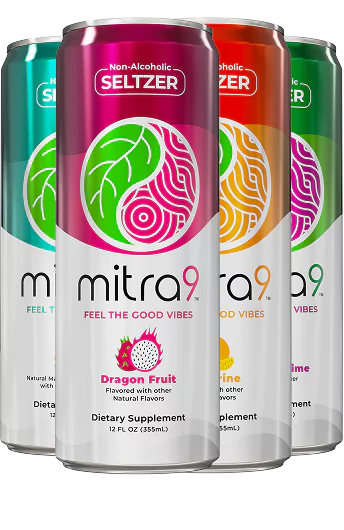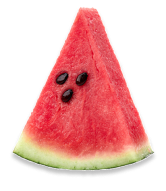
With an increasing number of people seeking healthier lifestyles and mindful drinking habits, the popularity of these drinks is soaring. According to Google Trends, the chart of non-alcoholic beverages consumption has transformed in the US. This shift is not just about cutting on alcohol; it is also about exploring different drinks that offer a unique experience and benefits without the buzz of booze.
As the demand for non-alcoholic beverages rises, so does the curiosity about what else exists. This opens doors for ancient and exotic botanicals, each with its own properties and cultural significance.
This blog post will discuss the three alternatives to alcoholic drinks- Kratom, Kava, and Kanna. Each hailing from a different part of the world offers distinct effects and experiences that can serve as intriguing substances for traditional alcoholic beverages.
Exploring Kratom: Nature's Relaxant
Kratom, scientifically known as Mitragyna Speciosa, is a tree native to Southeast Asia, particularly Thailand, Indonesia, Malaysia, etc. Its leaves have been used in traditional medicine and cultural rituals for decades. Local laborers and farmers would chew the leaves or brew them into teas to combat fatigue and enhance productivity.
Properties & Effects Of Kratom
The active compounds of Kratom are Mitragynine and 7-Hydroxymitragynine, which interact with the body’s opioid receptors. Unlike traditional opioids, Kratom’s interactions tend to be milder, offering pain relief and relaxation.
Users often report a sense of calmness and tranquility, reduced anxiety, and general well-being. These potential effects can vary based on the dosages; low amounts are more stimulating, while higher doses may offer soothing and relaxing effects.
Versatile Consumption
Kratom can be consumed in various ways, catering to different preferences and needs. The most traditional way is to chew the raw leaves or brew tea from the dried leaves. Kratom powder, made from dried leaves, is another popular option, and it can be mixed in food or beverages. For those who prefer convenience, Kratom is also available in capsule form, allowing for precise dosage without the bitter taste. Each method offers a unique experience, enabling users to find what’s best for them.
Health Considerations
While Kratom has potential health benefits, such as pain relief, calmness and relaxation, and reduced anxiety, it is important to use it with caution. It is not without side effects; some users report feeling nauseous, dizziness, and constipation. There are also some concerns about dependency and withdrawal symptoms with longer use. As Kratom is not regulated in many countries, the quality and potency of Kratom can differ significantly. Therefore, it is essential to buy high-quality Kratom and consult with a doctor before using it.
Unveiling Kava: The Pacific Euphoriant
Kava, also known as Kava-Kava, is a traditional drink from the Pacific Islands that has been consumed for centuries. Celebrated for its calming and social effects, Kava plays a significant role in communities' cultural and social life. The drink is made from the root of the Piper Methysicum, and its consumption is often linked to communal gatherings, celebrations, or important ceremonies
Preparation & Rituals
Kava preparation is an integral part of Pacific Island communities. The Kava roots are carefully harvested, cleaned, and dried before being kneaded to powder. The powder is then mixed with water and strained to produce a brown-colored beverage.
In many Pacific Island cultures, the preparation and consumption of Kava are accompanied by specific rituals and ceremonies. For example, in Fiji, Kava preparation is a communal ritual where people sit in a circle, share the drink in a communal bowl, and engage in storytelling, music, and dance. This enhances social bonding and honors the communities' cultural heritage.
Sensory Experience
Kava offers a unique sensory experience that distinguishes it from other beverages. Its taste is often earthy, slightly bitter, and somewhat pungent, with a distinctive numbing sensation on your tongue. This numbing effect is caused by the Kavalactones, the active compounds of Kava, adding a new dimension to your drinking experience.
Despite its unique flavor, many people consider the ceremonial consumption of Kava to be a sensory journey due to its calming effects.
Potential Health Benefits
Kava is not only celebrated for its euphoric effects but also for its therapeutic potential. It is widely used to relieve stress, anxiety, and muscle tension. Regular consumption improves mood, enhanced social interaction, and general well-being. Unlike alcohol, Kava does not impair your cognitive function or lead to dependency, making it an appealing alternative to seeking relaxation and social ease. This is one of the major reasons why people are moving towards Kava as a compelling alternative to alcohol.
Embracing Kanna: The African Uplifter
Kanna, scientifically known as Sceletium Tortuosum, is a lesser-known but worthy botanical from South Africa. Celebrated for its mood-lifting and energizing properties, Kanna has been used for centuries by the indigenous population to enhance their social experiences and elevate their mental well-being.
Historical Context
The historical and cultural significance of Kanna is deeply rooted in the Khoisan people of South Africa. Traditionally, Kanna was chewed, smoked, or used as a snuff to alleviate hunger, combat stress, and elevate mood during social and spiritual gatherings. Its ability to suppress appetite and provide mental clarity made it a valuable resource in the region's harsh environment.
Effects & Consumption
Kanna works primarily by working with the serotonin receptors, leading to its increased levels. Users often experience a sense of euphoria, relaxation, and enhanced sociability after consuming Kanna. Depending on the dosage and consumption methods, its effects can range from mild to intense.
Kanna can be ingested in several ways, including chewing the dried plant material, brewing it into a tea, or taking it in capsule form. It can also be found in various herbal supplements and extracts. Its versatility makes it an attractive choice for those seeking a natural mood-enhancing alternative to alcohol in social settings.
Potential Health Benefits
Despite its mood-enhancing effects, Kanna offers a diverse range of potential benefits that make it an appealing alternative to alcohol. It is known for its stress-relieving effects, helping to manage anxiety and promote a sense of calmness without the intoxicating effects of alcohol. It is also linked with improved cognitive function, potentially improving focus, memory, and overall mental clarity.
Additionally, it does not cause dependency, and its side effects are generally mild compared to those linked with alcohol consumption. By embracing Kanna, you can enjoy its energizing and uplifting effects while avoiding the adverse effects of alcohol.
Final Thoughts
In this article, we have explored the unique properties of the three fascinating alternatives to alcohol: Kratom, Kava, and Kanna. Kratom offers a versatile range of consumption methods and soothing effects, making it a smart choice for relaxation. Kava, with its rich cultural heritage and calming and mood-enhancing effects, provides an interactive social experience. Kanna stands out as an uplifting, stress-reducing option promoting mental clarity. Each of these non-alcoholic beverages brings something special to the table, offering a diverse experience.
We encourage you to delve deeper into these three beverages. Each offers a new opportunity to avoid alcohol but still enjoy yourself. Try each and then choose which one best suits your needs and preferences. By embracing these, you can encourage a culture that values health, wellness, and social connection.
But before that, you should also read these articles to learn more about these three botanicals:


























































